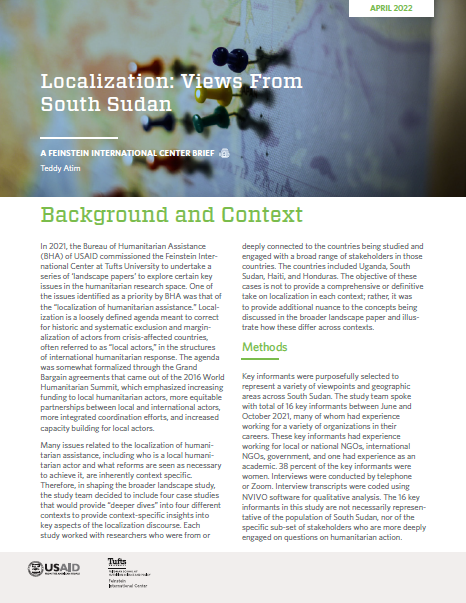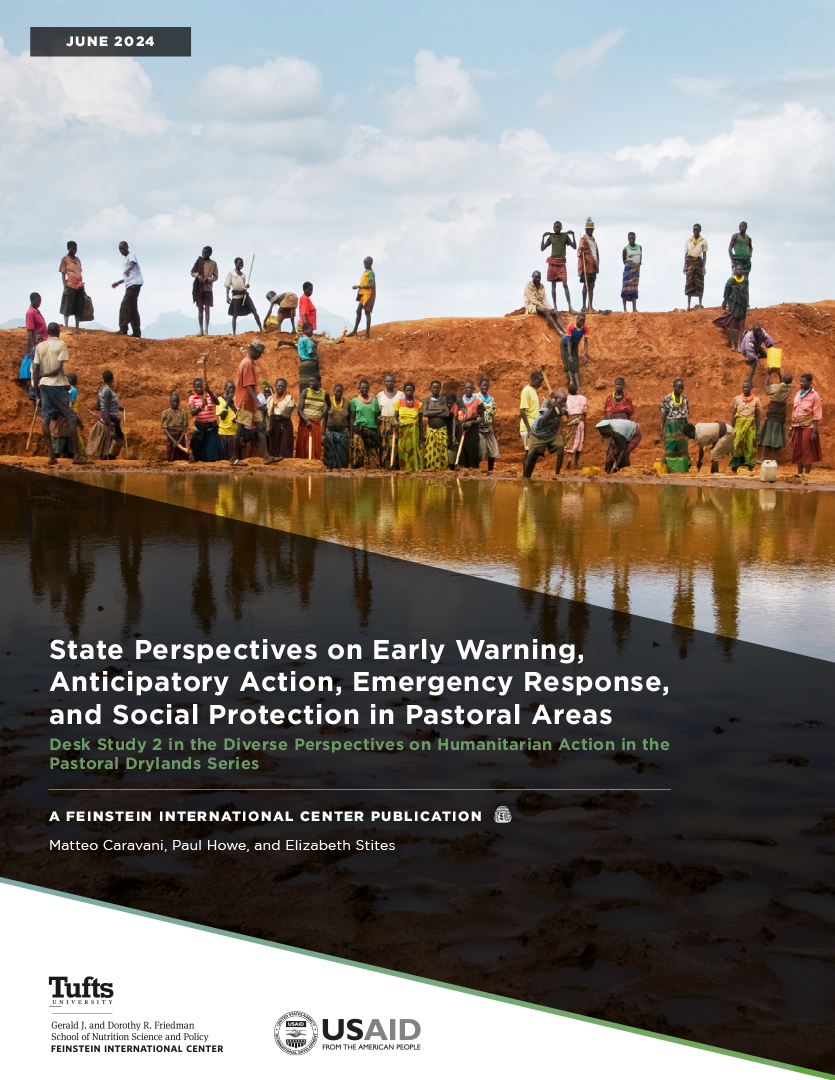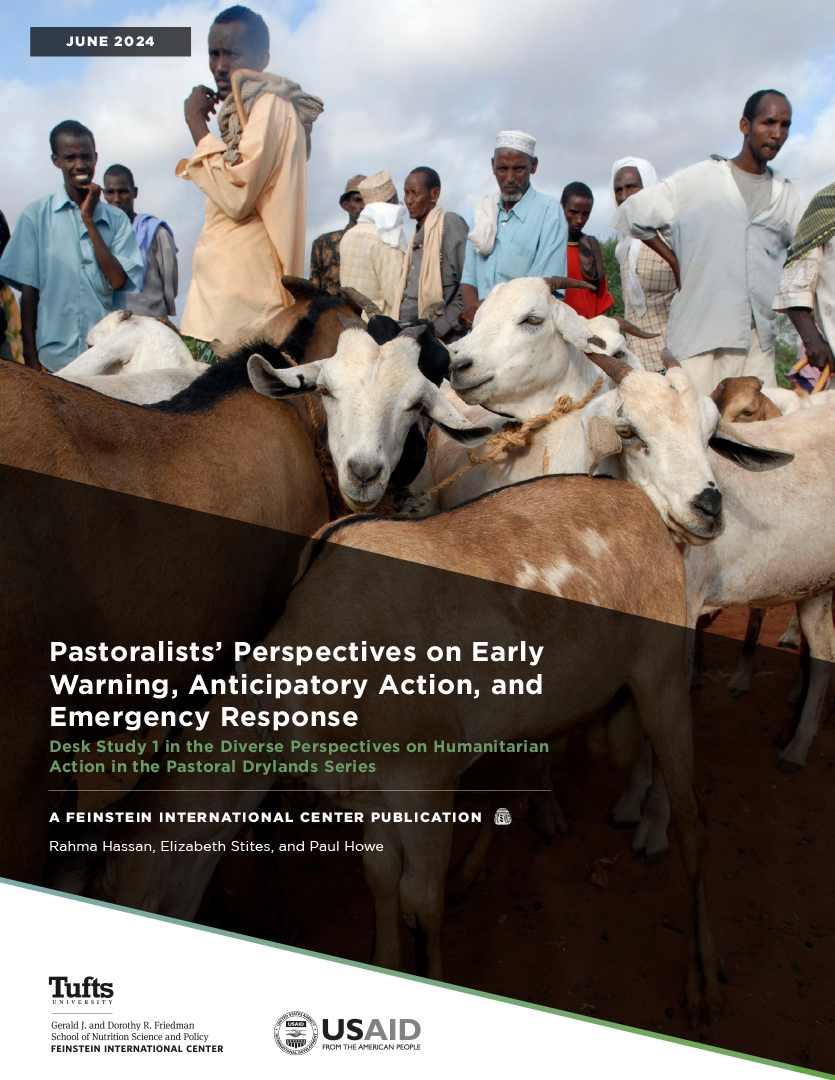Localization is a loosely defined agenda meant to correct for historic and systematic exclusion and marginalization of actors from crisis-affected countries, often referred to as “local actors,” in the structures of international humanitarian response. This is not a new agenda but was formalized through the Grand Bargain agreements that came out of the 2016 World Humanitarian Summit, which emphasized increasing funding to local humanitarian actors, more equitable partnerships between local and international actors, more integrated coordination efforts, and increased capacity building for local actors.
In 2021, the Bureau of Humanitarian Assistance of USAID commissioned the Feinstein International Center to draft a landscape paper to explore localization of humanitarian assistance. Because many issues related to the localization of humanitarian assistance are inherently context specific, the study team decided to include four case studies to shape the broader report.
The following studies provide “deeper dives” into four contexts to illustrate how the concepts discussed in the broader landscape paper differ across contexts. Each case study describes the country’s humanitarian context, discusses how key concepts (such as local) are defined in the country, describes the state of localization, reviews factors that contribute to and hinder localization, and makes recommendations.
- Views from Haiti (March 2023) by Sabina C. Robillard and Jessica Hsu
- Views from Honduras (May 2022) by Sabina C. Robillard and Elizabeth Kennedy
- Views from South Sudan (April 2022) by Teddy Atim
- Views from Uganda (April 2022) by Teddy Atim
These case studies were made possible through support provided by the Office of Acquisition and Assistance, Bureau for Management, United States Agency for International Development (USAID), under the terms of Cooperative Agreement No. 720FDA20CA00065. The opinions expressed herein are those of the authors and do not necessarily reflect the views of USAID.







